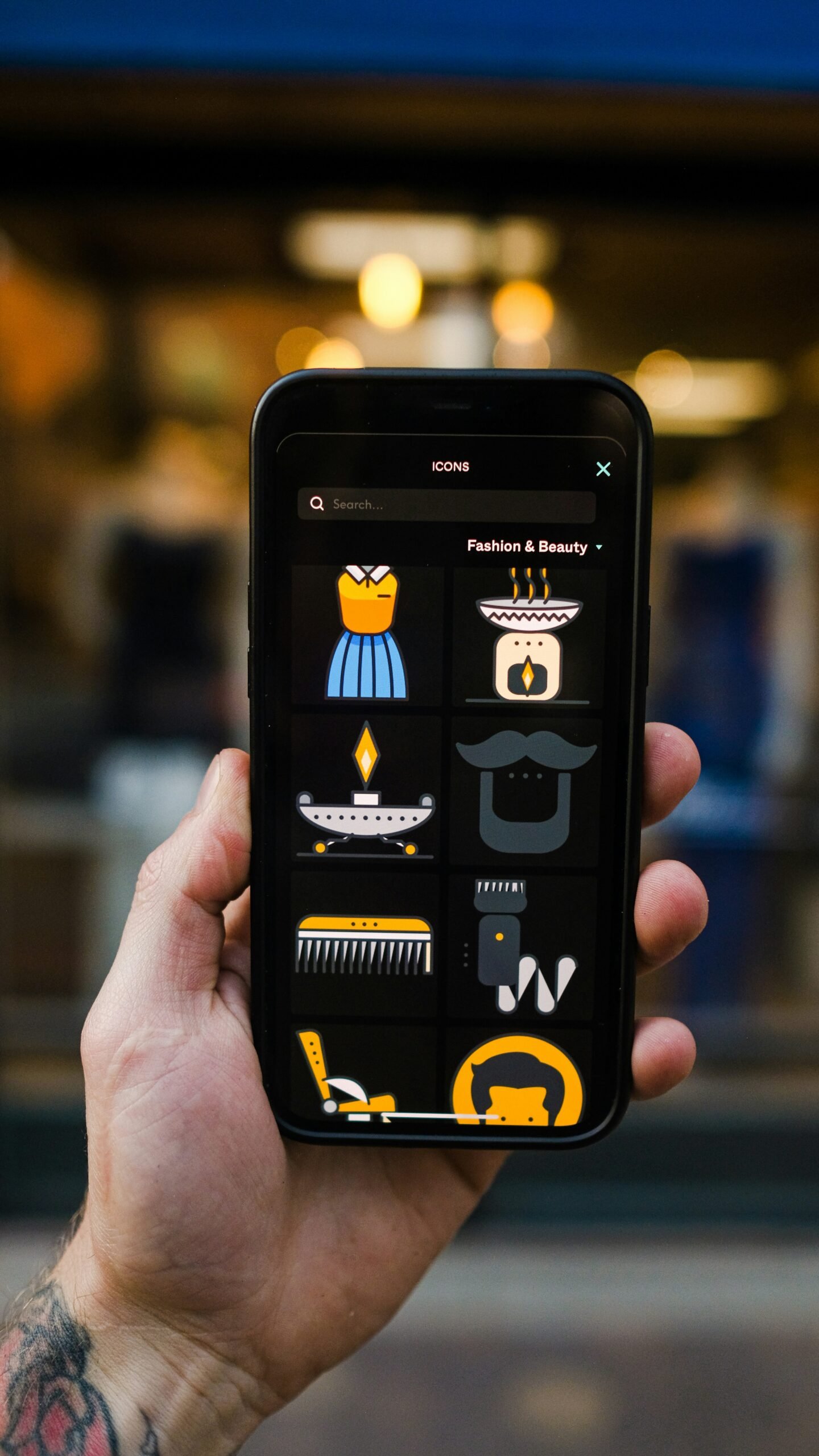
Introduction to Cursor AI
Cursor AI is an innovative tool designed to revolutionize the application development process by integrating artificial intelligence into the workflow. Catering to developers across all experience levels, Cursor AI simplifies complex coding tasks, allowing for a more intuitive and efficient development environment. Its core purpose is to enhance productivity, reduce development time, and enable developers to focus on creativity and problem-solving rather than getting bogged down by routine coding challenges.
One of the key features of Cursor AI is its ability to understand natural language inputs. This means that developers can describe what they want in plain English, and Cursor AI can translate those descriptions into functional code snippets. This capability is particularly beneficial for novice developers who may struggle with the syntax of programming languages. By breaking down the barrier of entry, Cursor AI empowers users to engage in application development without extensive prior knowledge.
Moreover, the technology behind Cursor AI is built on advanced machine learning algorithms that continuously improve the system’s performance over time. This learning capability ensures that Cursor AI stays up-to-date with the latest programming languages, libraries, and frameworks, making it a versatile tool for modern developers. The tool’s integration with various development environments enhances its usability, allowing developers to seamlessly incorporate Cursor AI into their existing workflows without disruption.
In addition to its core features, Cursor AI supports a wide range of programming languages, paving the way for developers to create applications across different platforms. As a result of its intuitive design and robust capabilities, Cursor AI is poised to become an essential asset in the toolkit of anyone looking to build applications efficiently and effectively.
Getting Started with Cursor AI
To begin your journey with Cursor AI, the first essential step is to create an account on the platform. Visit the official Cursor AI website, where you will find the registration option prominently displayed. Fill in the required fields, which typically include your name, email address, and a secure password. Once your account is set up, a confirmation email will be sent to you. Follow the instructions in the email to verify your account and gain access to the platform.
After logging in, you will be welcomed by a user-friendly interface designed to facilitate your project development. Familiarizing yourself with the layout is crucial. The dashboard will display various options, such as “Create New Project,” “My Projects,” and “Resources.” Each section is structured to ensure accessibility to all features, making it easier for new users to navigate through the initial stages of application development.
When you’re ready to embark on a new project, click on the “Create New Project” button. This action will prompt you to enter specific details about your application, including the project name and a brief description. It is advisable to choose a descriptive name that accurately reflects your app’s purpose and intended functionalities. Additionally, take a moment to explore the prerequisites required for your chosen project type; this might include the necessary integrations and frameworks to enhance your application’s capabilities.
Cursor AI also provides extensive resources and documentation that can be invaluable to beginners. Utilizing these resources can significantly reduce the learning curve and help you leverage the full potential of the platform. By following these initial steps, you will set a solid foundation for building your application with Cursor AI, paving the way for a seamless development experience.
Understanding Cursor AI’s Capabilities
Cursor AI represents a significant advancement in the realm of application development, equipped with a suite of powerful capabilities designed to enhance productivity and streamline processes. One of its pivotal features is AI-driven code suggestions. By analyzing the context of the code being developed, Cursor AI can provide real-time suggestions, thereby reducing the time developers spend on writing boilerplate code. For instance, when coding in Python, a developer can receive completions and alternatives that are contextually appropriate, whether they are defining functions or implementing algorithms.
Another noteworthy feature of Cursor AI is its natural language processing (NLP) capacity, which allows developers to interact with the tool using plain language commands. This capability transforms the way developers approach coding, as they can input requests like “Create a React component for user profiles,” and the AI understands and generates the appropriate code structure. This minimizes the learning curve for new developers and enhances efficiency for seasoned programmers by enabling them to focus more on logic and less on syntax.
Additionally, Cursor AI is equipped with robust debugging support. As errors arise during development, the AI can analyze the code to quickly identify potential bugs and suggest fixes. For example, if a developer encounters a runtime error, Cursor AI can pinpoint the source of the issue and provide actionable recommendations, thus expediting the debugging process. This capability not only saves time but also fosters a more productive coding environment, allowing developers to deliver high-quality applications with greater speed.
In summary, the capabilities of Cursor AI, including AI-driven code suggestions, natural language processing, and debugging support, significantly streamline the app development process. By integrating these features, developers can enhance their workflow and boost the overall efficiency of their projects.
Step-by-Step: Building Your First App with Cursor AI
Creating an application using Cursor AI can be a rewarding experience, especially for beginners in app development. The first step in this process is to plan the app’s functionality. Understanding the purpose of the app and identifying the core features are crucial to ensuring a smooth development experience. A clear roadmap helps in defining what the application should do, who the target audience is, and how it will stand out in the market. This foundational step serves as a guide throughout the development process.
Once the planning phase is complete, the next step involves designing the user interface (UI) components. Cursor AI allows for flexible design integration, enabling creators to think creatively while ensuring usability. It is advisable to sketch out wireframes to visualize the layout and flow of the application. During this phase, consider the user experience (UX) by thinking about the journey a user will take while navigating through the app. The goal is to create an intuitive interface that simplifies interactions.
After finalizing the UI design, you can begin the integration of backend services. Cursor AI provides various tools and resources to connect your app with necessary backend functionalities, such as databases and APIs. This step is vital, as it enables the application to process data and perform tasks. Ensure that the backend services are optimized for performance and security, as these factors significantly impact user satisfaction.
Throughout the development process, it is important to test your application regularly. Iterative testing will help identify any issues or bugs, allowing you to make enhancements progressively. By adhering closely to these steps—planning functionality, designing UI components, and integrating backend services—developers can build a robust application with Cursor AI that meets user needs and achieves business objectives.
Utilizing Cursor AI’s Collaboration Features
Cursor AI offers a suite of collaborative tools designed to enhance teamwork during app development projects. One of the platform’s standout features is its project sharing capability, which allows team members to easily access and contribute to the same project simultaneously. This functionality is particularly beneficial in remote work settings where team members may be dispersed across various locations. By enabling real-time collaboration, Cursor AI eliminates the barriers traditionally associated with distance and allows teams to maintain momentum, regardless of their physical setup.
To share a project within Cursor AI, users simply need to invite contributors via email or through a generated link. This process is intuitive and requires minimal steps, ensuring that teams can onboard new members quickly. Once added, contributors can engage with the project through a user-friendly interface that supports various roles and permissions. This ensures that each team member can be assigned specific tasks while maintaining control over sensitive areas of the project.
In addition to project sharing, Cursor AI provides integrated feedback mechanisms that streamline communication among team members. Users can leave comments directly on specific elements of the app, allowing for focused discussions and prompt responses to suggestions or inquiries. This feature fosters a constructive dialog among team members and can significantly enhance the overall quality of the work by addressing potential issues in real time. Furthermore, the feedback system allows for organized tracking, ensuring that all comments are documented and actionable.
Overall, the collaborative features of Cursor AI transform the app development process. With efficient project sharing, effective contributor management, and streamlined feedback processes, teams can work harmoniously, ensuring that projects advance smoothly and successfully.
Advanced Features of Cursor AI
Cursor AI offers a range of advanced features designed to enhance the application development process for experienced developers. These functionalities facilitate customization options, API integrations, and performance optimization tools, all aimed at maximizing the effectiveness of app development. Understanding these advanced features allows developers to leverage the full potential of Cursor AI, thereby contributing to the creation of highly functional and responsive applications.
One of the prominent customization options available in Cursor AI is the ability to configure user interfaces to align with specific user needs and preferences. Developers can modify layouts, themes, and functionalities, ensuring that the final product not only meets project requirements but also enhances user experience. By utilizing these customization features strategically, developers can create a more engaging and intuitive environment for their target audience.
API integrations present another significant advantage of Cursor AI, enabling seamless connectivity with various services and platforms. Integrating third-party APIs can help developers incorporate additional functionalities, such as payment processing, data analytics, and social media connectivity, enhancing the overall capabilities of the application. For optimal results, developers should consider the documentation and best practices provided by the API services to ensure smooth and effective integration.
To further improve application performance, Cursor AI offers several performance optimization tools. These tools help identify bottlenecks and suggest enhancements, ultimately resulting in increased speed and responsiveness of the application. Developers are encouraged to monitor performance consistently, employing testing methodologies to assess the application’s efficiency. By optimizing performance proactively, developers can enhance user satisfaction, thereby increasing user retention rates.
Utilizing the advanced features of Cursor AI can significantly streamline the development process. Experienced developers stand to benefit tremendously by applying these tools and techniques thoughtfully, leading to heightened application effectiveness and user engagement.
Cursor AI for Students: Free Access and Resources
In today’s digital age, the accessibility of advanced tools such as Cursor AI can significantly enhance the learning experience for students. Cursor AI offers free access to its platform specifically designed for students, allowing them to explore artificial intelligence without any financial constraints. To take advantage of this opportunity, students must complete a simple registration process. They can sign up by visiting the official Cursor AI website, where they will find a dedicated section for student registration. The process is straightforward and typically involves providing a valid student email address and some basic personal information.
Eligibility for free access is primarily based on the confirmation of the student’s current academic status. Cursor AI verifies this by checking the provided email domain or asking for additional documentation if necessary. This initiative ensures that the resources are devoted exclusively to those who are legitimately pursuing their education. Once enrolled, students gain access to a wealth of resources designed to facilitate learning and practical application of skills in artificial intelligence.
The platform offers a variety of tutorials tailored for different skill levels, making it easy for students to engage with content that suits their knowledge base. These tutorials cover fundamental concepts, practical applications, and advanced techniques within the realm of AI. Additionally, Cursor AI provides excellent support for students, including forums for discussion and collaboration, as well as access to mentors who can offer guidance on projects and coursework. By leveraging these free resources, students can build a strong foundation in artificial intelligence, equipping them with valuable skills that are increasingly in demand across various industries.
Real-World Applications of Cursor AI
Cursor AI has emerged as a transformative tool, enabling developers to create innovative applications across various sectors. Its adaptable nature allows for diverse use cases, each exemplifying the platform’s capabilities. One notable case is in the field of healthcare, where a team developed an intelligent diagnosis assistant utilizing Cursor AI. This application leverages natural language processing to interpret patient symptoms and medical history, providing preliminary recommendations to healthcare professionals. The result is a significant reduction in diagnosis time, enhancing patient care outcomes.
In the realm of finance, Cursor AI has facilitated the creation of predictive analytics tools that assist in investment decision-making. For instance, a startup harnessed Cursor AI to analyze historical market data and sentiment from social media. This application enables investors to gauge market trends more accurately, leading to better-informed choices and increased portfolio performance. By employing machine learning algorithms, the application continually refines its predictions, demonstrating the platform’s scalability and efficiency.
Moreover, the educational sector has also embraced Cursor AI to build personalized learning platforms. An example of this can be seen in an e-learning application designed for high school students that adapts content based on individual learning speeds and styles. By analyzing student performance, the application curates customized study paths and offers tailored resources, directly enhancing the learning experience. This innovative utilization of Cursor AI showcases its profound impact on the education space, fostering improved engagement and academic success.
These examples underline the versatility and effectiveness of Cursor AI in developing practical applications tailored to meet user needs. Whether in healthcare, finance, or education, the potential for Cursor AI to drive innovation is vast, encouraging further exploration of its capabilities across other industries.
Conclusion and Future of App Development with AI
As we navigate through the landscape of modern technology, it is evident that the integration of artificial intelligence, specifically tools like Cursor AI, is revolutionizing the way applications are developed. Throughout this comprehensive guide, we have explored various dimensions of app building with AI, highlighting its ability to streamline workflows, enhance user experience, and foster innovation. The utilization of such intelligent systems not only expedites the development process but also supports creators in overcoming common challenges encountered in traditional programming paradigms.
Moreover, Cursor AI facilitates a unique approach to problem-solving by automating repetitive tasks, allowing developers to focus on more strategic and creative aspects of their projects. Its capacity to analyze data patterns and offer suggestions paves the way for more informed decision-making, ultimately leading to the development of more intuitive and responsive applications. As these technologies continue to evolve, one can anticipate an even broader spectrum of functionalities that AI can bring to the application development process.
Looking ahead, the role of AI in app development is set to expand significantly. Emerging trends indicate a growing shift towards collaborative AI systems where human intelligence merges with artificial intelligence, creating a synergy that could redefine the boundaries of creative expression in software design. Consequently, developers are encouraged to embrace such technologies and incorporate them into their workflows. By leveraging tools like Cursor AI, professionals can not only enhance productivity but also cultivate a more innovative approach to software creation.
In conclusion, the future of app development is inherently tied to advancements in AI, which promises to reshape the industry landscape. By harnessing the power of intelligent tools, developers are well-positioned to pioneer new solutions, ultimately leading to a more efficient and creative digital ecosystem. The potential for growth and innovation is immense, making now an opportune moment to explore the possibilities that AI-driven application development offers.








